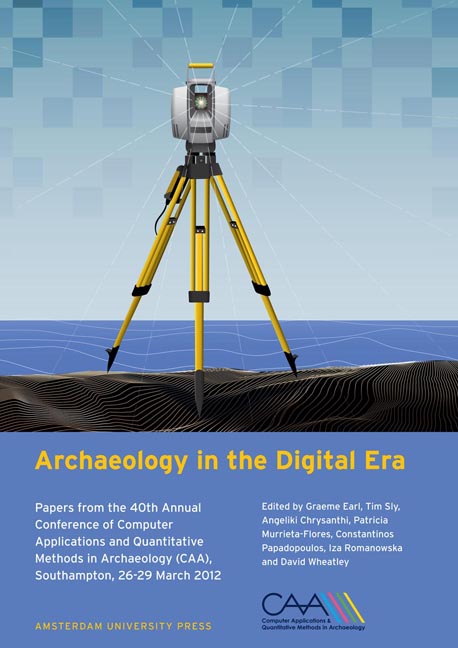 Archaeology in the Digital Era
Archaeology in the Digital Era Published online by Cambridge University Press: 16 February 2021
Abstract:
Menorca (Balearic Islands, Spain) offers exceptional geographical conditions for examining complex human development in the Mediterranean. This paper investigates the settlement development of Menorca over the last four thousand years, beginning with thefirst occupation of the island. Using a well-established deep chronological resolution, a GIS-based approach has been applied to archaeologically assembled settlement data. The application of spatial analysis techniques provides significant results regarding site density, settlement pattern, and site location preferences. The usage of a deep time-span converts this research into the first long-term spatial analysis of the settlement record in a Menorcan framework.
Keywords:
Domestic Settlement, Site Density, Settlement Pattern, GIS-Based Approach
Introduction
The application of geographic information systems (GIS) is a powerful tool for investigating the complexity of socio-archaeological entities. Recent developments in the application of GIS software in archaeology have, in fact, led to the creation of a reference framework incorporating the methodological insights achieved in spatial archaeology during the last twenty years (Lock and Stancic 1995; Lock 2000; Wheatley and Gillings 2002; Conolly and Lake 2006; Verhagen et al. 2007). Spatial analysis, network analysis, map algebra, location models and prediction are some of the most important advancements and means used by archaeologists in the spatial decoding of past human behaviour.
Menorca has received special archaeological interest for more than one hundred years, due to the exceptional monumentality of its prehistoric architecture (e.g. Ramis and Ramis 1818; Cartailhac 1892/1991). More recent research has promoted a growing interest in understanding the archaeological sequence, socio-economic development, and identification of socio-ideological transformations in the Balearic communities during later prehistory (Lull et al. 1999 a, b, c, 2002,2005, 2008; Guerrero and Gornes 2000; Micé 2005 a, 2006; Gili et al. 2006).
The use of GIS approaches to understand Menorcan prehistory is relatively new. Initial analyses have been conducted on burial and domestic sites on the island using a GIS framework for the visualization of the prehistoric spatial trajectory and possible catchment areas (Gomes et al. 2004: 327-350). In addition, the general distribution of the prehistoric sites has been examined (Benejam 1993), together with the investigation of possible occupational strategies (Garcia-Arguelles et al. 1994) and population sizes (Aramburu Zabala 2002).
To save this book to your Kindle, first ensure no-reply@cambridge.org is added to your Approved Personal Document E-mail List under your Personal Document Settings on the Manage Your Content and Devices page of your Amazon account. Then enter the ‘name’ part of your Kindle email address below. Find out more about saving to your Kindle.
Note you can select to save to either the @free.kindle.com or @kindle.com variations. ‘@free.kindle.com’ emails are free but can only be saved to your device when it is connected to wi-fi. ‘@kindle.com’ emails can be delivered even when you are not connected to wi-fi, but note that service fees apply.
Find out more about the Kindle Personal Document Service.
To save content items to your account, please confirm that you agree to abide by our usage policies. If this is the first time you use this feature, you will be asked to authorise Cambridge Core to connect with your account. Find out more about saving content to Dropbox.
To save content items to your account, please confirm that you agree to abide by our usage policies. If this is the first time you use this feature, you will be asked to authorise Cambridge Core to connect with your account. Find out more about saving content to Google Drive.